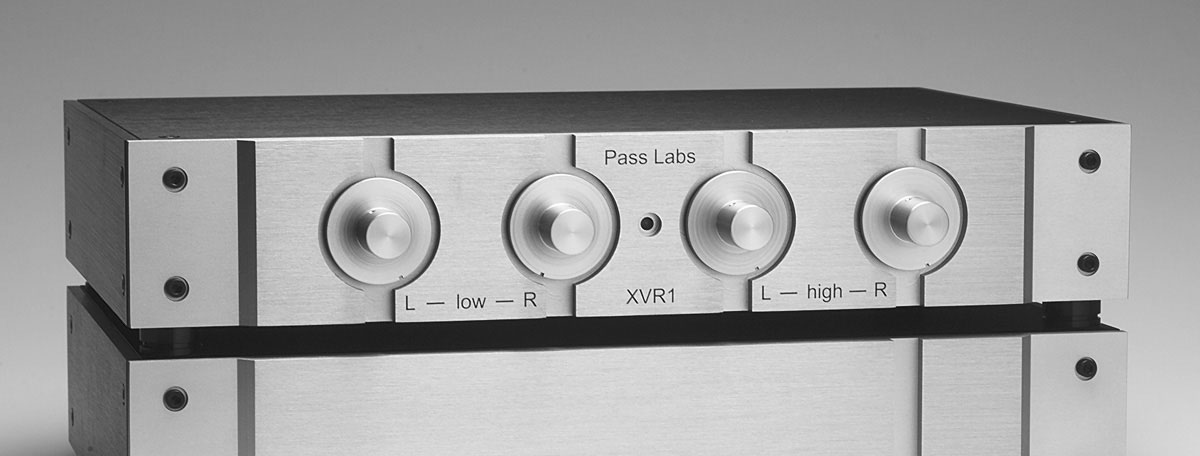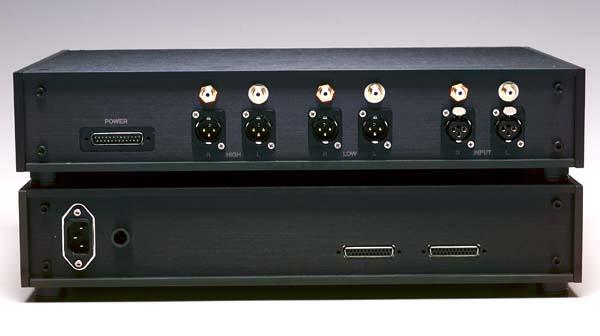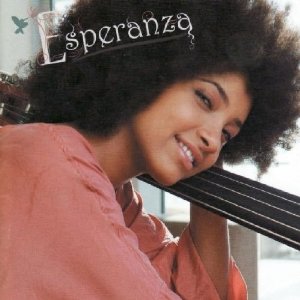Pass Labs XVR-1 Electronic Crossover: Approaching Sonic Nirvana
|
|
|
|
|
February, 2013 |

 Those of you who may have read some of my reviews from the latter half of 2012 already know that I made an interesting addition to my reference system when a bought a used pair of the original Magnepan MG20 loudspeakers. I bought them because, first, I had long been a huge fan of these speakers and the previous owners was selling them at a simply “must have” price. Second, they were in about as pristine a condition as any twenty-year-old could be in. And third, they were Maggies baby!
Those of you who may have read some of my reviews from the latter half of 2012 already know that I made an interesting addition to my reference system when a bought a used pair of the original Magnepan MG20 loudspeakers. I bought them because, first, I had long been a huge fan of these speakers and the previous owners was selling them at a simply “must have” price. Second, they were in about as pristine a condition as any twenty-year-old could be in. And third, they were Maggies baby!
But this purchase came with one minor caveat. The previous owner had done away with the original stock crossovers and had replaced them with the excellent Bryston 10B electronic crossover. A lot about what I had read on the internet about this unit seemed to indicate that it was indeed an upgrade over the stock Maggie crossover, so I wasn’t too worried about this except for the fact that I now had to have four channels of amplification to operate the high and low frequencies of the MG20s. Well, two months and two pairs of Bel Canto mono amps and the problem was solved… or was it?
After several visits to some of the Maggie blog sites, I began to notice a reoccurring theme: the Pass Labs XVR-1 was an even bigger upgrade to the MG20s than the Bryston. Well, the idea of not putting the best possible crossover on my MG20s got the best of me. So I called Pass Labs and was fortunate enough to talk to the immediately amiable Kent English, North American Sales Director.
English informed me that the XVR-1 was actually created by he and the great Nelson Pass specifically for their legendary Rushmore loudspeaker. It was not intended to be a product for the audiophile marketplace. But as things go, they ended up making a few of the units for a few friends who in turn wanted them for their friends and… voila!
Working with the XVR-1

Now at this point I have to be honest and tell you that I have all of the technical acumen of dried fruit. I’m not going to even act like as if I did any significant setup with this unit. I was fortunate in that Kent English found all of the crossover point and slope setting and such info on the MG20 that he needed so that he could “idiot proof” (my words) the unit for me so that all I would have to do was plug-n-play. Now while he did offer to let me contact him once I received the unit so that he could walk me through any settings changes that I might want, I was extremely happy with the way the unit sounded as soon as I hooked it up. No need to mess around with the manual and get experimental.
Besides, English told me that, “the manual is only a starting point; it does not address the fact that there is no particular need to set poles within a filter group to the same frequency or any pairing to the same “Q”. Thus, mathematically speaking, there is opportunity to select upwards of 28 million permutations for each filter without ever considering gain which can be set from the front panel.”
The filter groups of the XVR-1 are capable of discrete settings from 22Hz to 18kHz. There are frequency, multipliers of 0x, 1x, 10x, 100x 1-4 poles, “Q”; high-pass/low-pass or bandpass all set by internal jumpers. A more experienced user can set the unit by ear or by using something like the Real Time Analyzer (RTA) on JL Audio’s free iPhone app. Yes, I had that befuddled look on my face that you see when you take away a dog’s bone and replace it with a chew toy when English told me all this. But believe me, this is not a hard thing to do.
System Impact
The impact of the XVR-1 in the system was immediate and startling. I swear I had no idea how
much good, solid bass the Maggies could produce. It was at least the equal of what I usually got from the Escalante Fremonts and their dual 12” woofers. Just to see how much bass they could play musically, I plaid bassist Me’Shell NdegeOcello’s 2002 CD Cookie: The Anthropological Mixtape[Maverick]. I went to track 8, “Akel Dama (Field of Blood).” This tune is loaded with deep bass and the XVR-1 fed MG20s don’t flinch even when I pushed the envelope a bit on the volume. But the sound wasn’t perfect. In fact, it got downright “brightish” as the volume went up. But I determined that this was actually just the nature of this particular recording (despite this performer’s obvious brilliance her recordings tend to be tremendously overproduced and layered with way too many samples).

So I shifted to another female bassist who is the antithesis of Ms. NdegeOcello, and that would be Esperanza Spalding. Her wonderful 2009 self titled CD Esperanza Spalding [Heads Up] is loaded with great music and even better vocals. My favorite song is track 2, “I Know You Know,” because of its combination of her lovely voice and deft touch on the upright bass. This song has excellent rhythm and percussive clarity via the XVR-1. Actually, that is probably the key differentiator between it and the Bryston: level of clarity and rhythm. Don’t get me wrong, the Bryston is very good in both of these facets, but the Pass is transformative at both ends of the frequency spectrum.
 This was most evident on Cassandra Wilson’s Another Country[Entertainment One Music]. The opening track, “Red Guitar” is very interesting to listen to. It is made to sound like a live recording but I believe that it is a studio recording with a live ambient sound track added to give the song atmosphere. The XVR-1 renders this tune in a way that allows you to hear very deeply into the recording so that you can clearly hear the sound of patrons talking and waiters serving food and drinks. Wilson’s guitar playing isn’t going to stir up the echoes of Stevie Ray Vaughn but her singing does its job and is compelling to listen to. This track also features some wonderful bass playing by Reginald Veal and gives the song a tremendous and well articulated rhythm section. The same can be said of track 5, the bossa nova infused “Almost Twelve,” which features the deft touch of the brilliant jazz guitarist Fabrizio Sotti. It’s all good via the XVR-1. It portrays all types of material with the same dedication to the truth of the quality of the recordings and performances.
This was most evident on Cassandra Wilson’s Another Country[Entertainment One Music]. The opening track, “Red Guitar” is very interesting to listen to. It is made to sound like a live recording but I believe that it is a studio recording with a live ambient sound track added to give the song atmosphere. The XVR-1 renders this tune in a way that allows you to hear very deeply into the recording so that you can clearly hear the sound of patrons talking and waiters serving food and drinks. Wilson’s guitar playing isn’t going to stir up the echoes of Stevie Ray Vaughn but her singing does its job and is compelling to listen to. This track also features some wonderful bass playing by Reginald Veal and gives the song a tremendous and well articulated rhythm section. The same can be said of track 5, the bossa nova infused “Almost Twelve,” which features the deft touch of the brilliant jazz guitarist Fabrizio Sotti. It’s all good via the XVR-1. It portrays all types of material with the same dedication to the truth of the quality of the recordings and performances.
Conclusion
Like all Pass Labs products the XVR-1 is beautifully built, thoughtfully designed and comes with the support of wonderful people like Kent English. I seriously enjoyed my time with this unit as it was a definite step up from the Bryston. It will afford the user an enormous amount of flexibility designed to bring you as closer to your sonic nirvana.
Unfortunately, the review sample I had was the only one they had on hand and I probably selfishly kept it longer than I should have. So while I’m reluctantly sending it back to Pass for the time being, I sincerely hope to give it a permanent home in my reference system, depending on if I decide to keep the Maggies, not to mention how well I survive the upcoming income tax season. Gotta feed the beast, if ya know what I mean. A “Most Wanted Component” if there ever was one.

![]()
Specifications
Tests conducted with 10 Kohm load on outputs, 50 ohm signal source, 120 VAC
AC current draw: .2 Amps, 24 watts
AC voltage minimum: 97 V
Input impedance: 66 Kohm balanced differential, 44 Kohm single ended
Input CMRR: -60 dB @ 20 KHz
Crosstalk: -80 dB @ 20 KHz
Output impedance: 200 ohm balanced differential, 100 ohm single ended
Gain, input to output: Low Q, XLR = 5.6 dB, RCA out = -.4 dB
Med Q, 6/12 dB/oct, XLR = 8.6 dB, RCA out = 2.6 dB
Med Q, 18/24 dB/oct, XLR = 13.4 dB, RCA out = 7.4 dB
Hi Q, 6/12 dB/oct, XLR = 11.6 dB, RCA out = 5.6 dB
Hi Q, 18/24 dB/oct, XLR = 17.6 dB, RCA out = 11.6 dB
All Pass Bandwidth: Low Pass: -0 @ 10 Hz, -0 @ 100,000 Hz
High Pass: -1 @ 10 Hz, -0 @ 100,000 Hz
Maximum Output: 30 V rms Balanced, 15 V rms single ended RCA
Maximum Input: 30 V rms Balanced, 15 V rms single ended RCA
Distortion + Noise: .05%, .2 V to 30 V balanced, 20 Hz to 20 KHz
.002%, 3V balanced, 1 KHz
Filter characteristic: High Pass: 6/12/18/24 dB/oct, 22 Hz to 18 KHz in 39 steps
Low Pass: 6/12/18/24 dB/oct, 22 Hz to 18 KHz in 39 steps
Price: $5000.00
Contact:
Pass Laboratories
24449 Foresthill Rd.
Foresthill, CA 95631 USA
Telephone: 530.367.3690
Facsimile: 530.367.2193
Email: info@passlabs.com
Website: www.passlabs.com
Associated Equipment:
Analog Front End
George Warren Precision Sound Turntable
Moth Arm2 Incognito wired tone arm
Benz Micro Ace Cartridge
Digital Front End
OPPO Digital DV-980H Universal Disc Player
TEAC UD H01 DAC
Amplification
Vitus Adio RI-100 Integrated Amp
Vitus Audio RL-101 Linestage
Bel Canto Ref 1000 Mono Amps
Bel Canto M300 Mono Amps
Bryston 10b Electronic Crossover
Clearaudio Smartphono Phono Stage
Loudspeakers
Escalante Design Fremont
Magnepan MG20 Loudspeaker
Cabling
Entreq Audio Konstantin Cables
Entreq Audio Apollo Cables
MG Audio Cables
Stealth Audio Cables
AC Conditioners
Acoustic Revive RTP-2 Ultimate Power Supply Box
Isoclean 60A3 II Power Conditioner
Accessories
Adona Corporation Zero GXT Equipment Stand
Entreq Vibbeaters
Entreq AC Wraps
Tyler Acoustics Speaker Stands
![]()
Stereo Times Masthead
Publisher/Founder
Clement Perry
Editor
Dave Thomas
Senior Editors
Frank Alles, Mike Girardi, Key Kim, Russell Lichter, Terry London, Moreno Mitchell, Paul Szabady, Bill Wells, Mike Wright, Stephen Yan, and Rob Dockery
Current Contributors
David Abramson, Tim Barrall, Dave Allison, Ron Cook, Lewis Dardick, Dan Secula, Don Shaulis, Greg Simmons, Eric Teh, Greg Voth, Richard Willie, Ed Van Winkle, and Rob Dockery
Music Reviewers:
Carlos Sanchez, John Jonczyk, John Sprung and Russell Lichter
Site Management Clement Perry
Ad Designer: Martin Perry





Be the first to comment on: Pass Labs XVR-1 Electronic Crossover: Approaching Sonic Nirvana